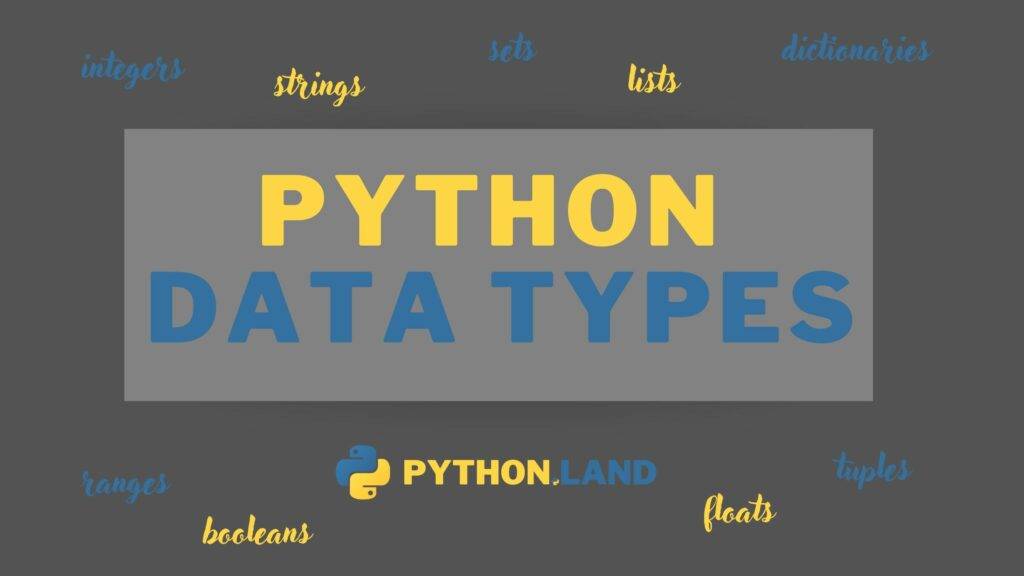In this section, we take a close look at the most important Python data types. Python provides us with several native data types to store and process data. These are essential building blocks that you need to know well. When thinking about a problem, part of the solution is often choosing the right data type. Knowing what each data type is capable of will make it much easier to pick the right one.
Table of Contents
Basic and advanced Python data types
We distinguish between basic types and more advanced data structures. The basic data types in Python store a single value, like a number or a piece of text. The basic data types in Python are:
- Integers
- Floating point numbers
- Complex numbers
- Booleans
- Strings
Next, we have the more advanced Python data types. They can store many items, like lists of items or key-value pairs:
These types all have distinctive features that set them apart from the others. For example, ranges are efficiently calculated on the fly, tuples can not be modified (while lists can), and sets allow you to do mathematical set calculations.
Mutability in Python
Python data types can be categorized into two classes: mutable and immutable. Or, more accurately, hashable and unhashable. An object is mutable if we can change the data it holds, and it’s immutable if we can’t. Examples of immutable data types in Python are:
Python data types that are mutable are:
Why and when are data types mutable?
We haven’t explored all these types yet, but let’s take a list as an example. Without knowing the exact details, I can tell you that you can add more items to a list, remove items, and replace them. These are not surprising features for a list, right? So, a list can be changed; hence, it is mutable.
However, an integer is a number, like 2, 3, and 4. You can’t change a number; it is what it is. I can almost hear you thinking now, “But I can change a Python variable, even if it’s an integer!” You’re right, but that’s something different.
Let’s look at an example where we assign the string ‘hello’ to a variable called mystring, and then change it:
>>> mystring = 'hello'
>>> mystring = 'world'Code language: Python (python)What we are doing is reassigning a new value to a variable. We’re not changing the string ‘hello’ itself.
There’s another way to explain this. A variable points to a spot in your computer’s memory. That is what we call a pointer. In the first instance, mystring points to a spot in memory where we stored the string ‘hello.’ After changing mystring to ‘world,’ it points to another spot in memory where we store the word ‘world.’ We didn’t change the string ‘hello.’
We can prove this by doing the following:
>>> mystring = 'hello'
>>> mycopy = mystring
>>> mystring = 'world'
>>> print(mycopy)
'hello'Code language: Python (python)We created a second variable pointing to the string ‘hello’. When we changed mystring to point to a different string, we could still reference the previous string because mycopy also points to the ‘hello’ string’s location in memory.
This is different from a list, for example. If the variable mylist points to a list structure in memory, and when we change that list, it still points to the same list structure. All we do is change the list structure itself (its content). Python doesn’t replace the list but modifies it instead.
How do I check the Python data type?
There’s a built-in function called type which you can use to check data types in Python. Let’s look at some examples of type at work:
>>> type(3)
<class 'int'>
>>> type('hello')
<class 'str'>
>>> type([1,2,3])
<class 'list'>Code language: Python (python)If you are experimenting in the REPL, type is a valuable function that can give you more insight into what’s happening under the hood!




